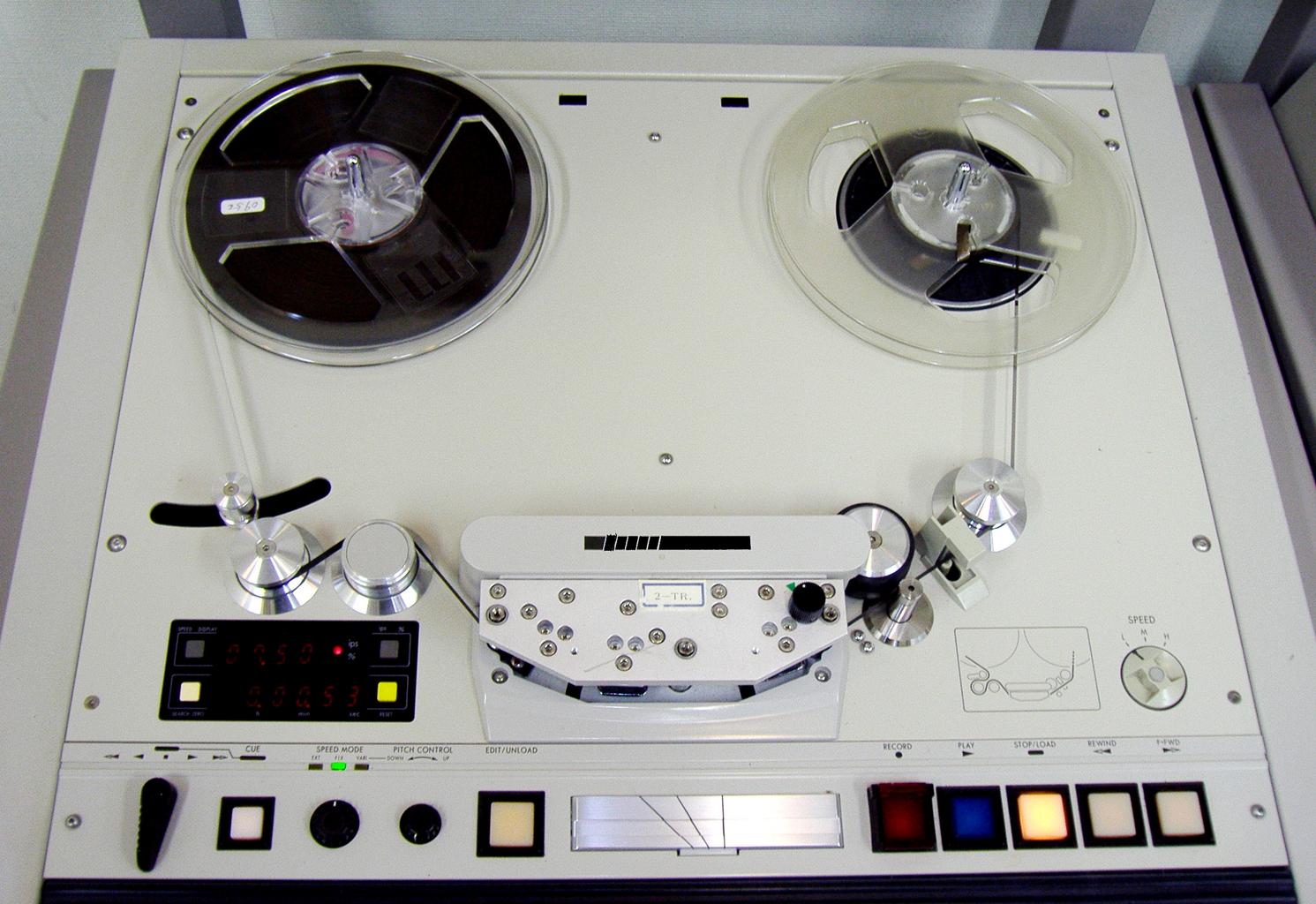Delay effects for guitar began in recording studios using a recording technique known as tape echo using analog reel-to-reel tape.
Delay and echo effects repeat the guitar’s signal based on different time settings to create “slap-back” and other delay and echo effects. Delay effects use analog (tape), solid-state, and digital circuitry.
Analog Tape Echo
 Tape echo started being experimented with by using a copy of the same recording and splicing the two together at different times, or by having the recording repeated multiple times. Tape echo was done using reel-to-reel analog tape machines in recording studios. Different guitar effects, such as delay and flanger, emerged from recording on reel-to-reel tape and altering its playback.
Tape echo started being experimented with by using a copy of the same recording and splicing the two together at different times, or by having the recording repeated multiple times. Tape echo was done using reel-to-reel analog tape machines in recording studios. Different guitar effects, such as delay and flanger, emerged from recording on reel-to-reel tape and altering its playback.
Analog Solid-State Delay
In the 1970s, solid-state delay pedals became available using bucket-brigade devices. These pedals were an analog alternative to the bulky tape echo units. The mainstream use of solid-state delay units was short-lived as they were only capable of shorter delay times than digital would have to offer. Some of the solid-state pedals released are still known for their warm tone and thought of as classic delay pedals.
Digital Delay
Soon after the introduction of solid-state delay pedals, digital delay systems became available and started taking over. Using a combination of an analog-to-digital converter, a digital signal processor and a digital-to-analog converter. The signal would go through these converters and processors and would be recorded into a buffer that would be played back at a set duration of time to get different delay times and effects.
Digital delay effects have a wider spectrum to work with than analog and solid-state delays, but some guitarists prefer the analog delay's warmer tone similar to the tone tape echo produces.
There are many different delay and echo effect processors and stomp boxes available today. Each offers different functions to make use of delay such as looping.